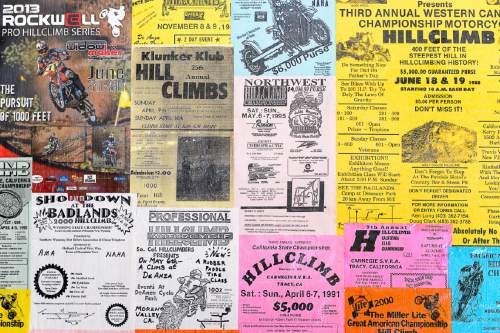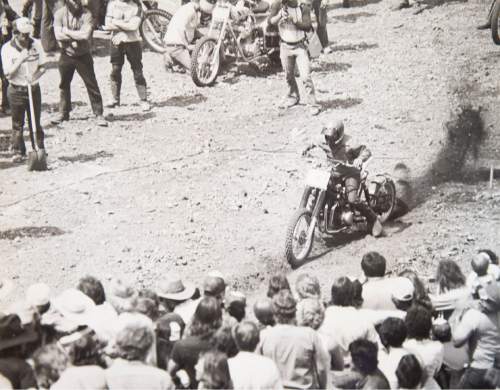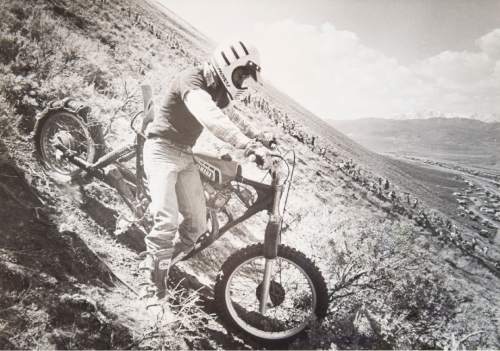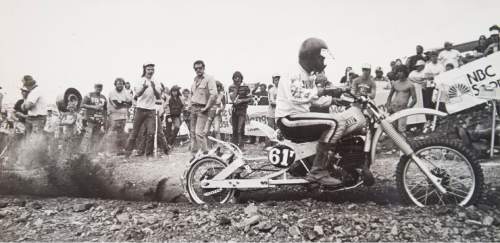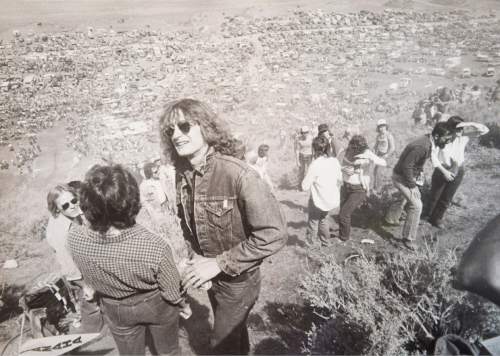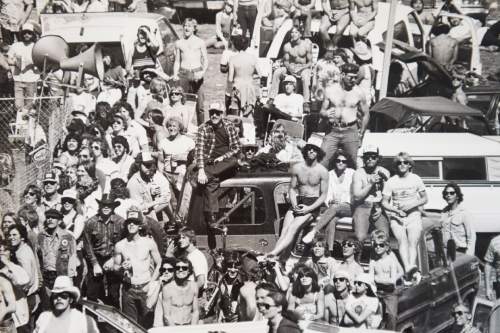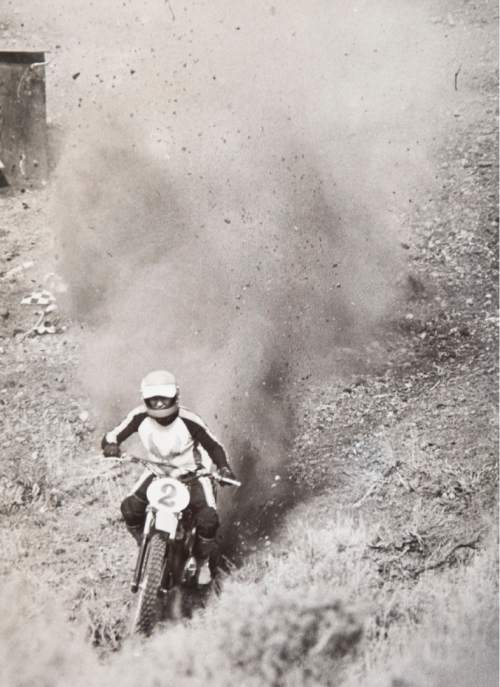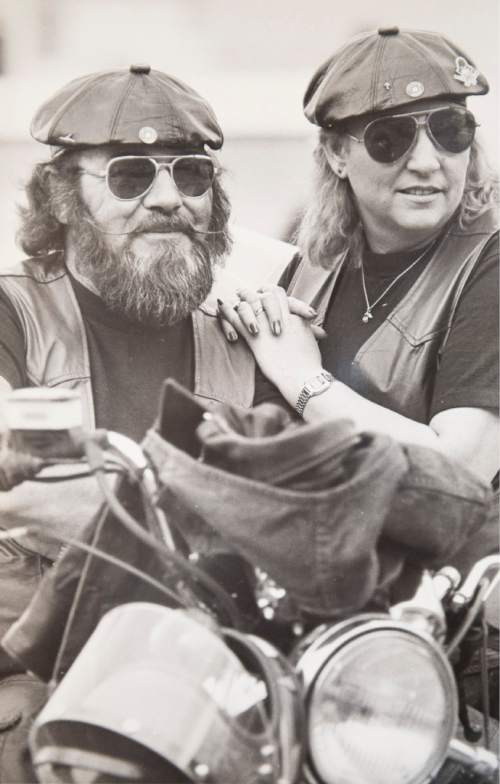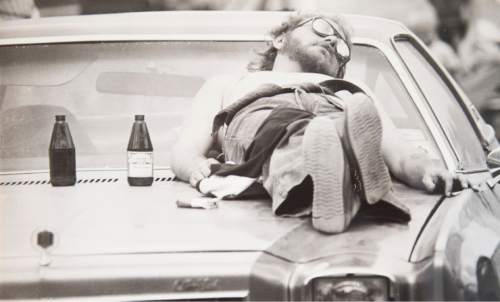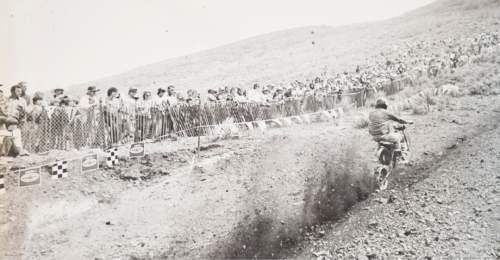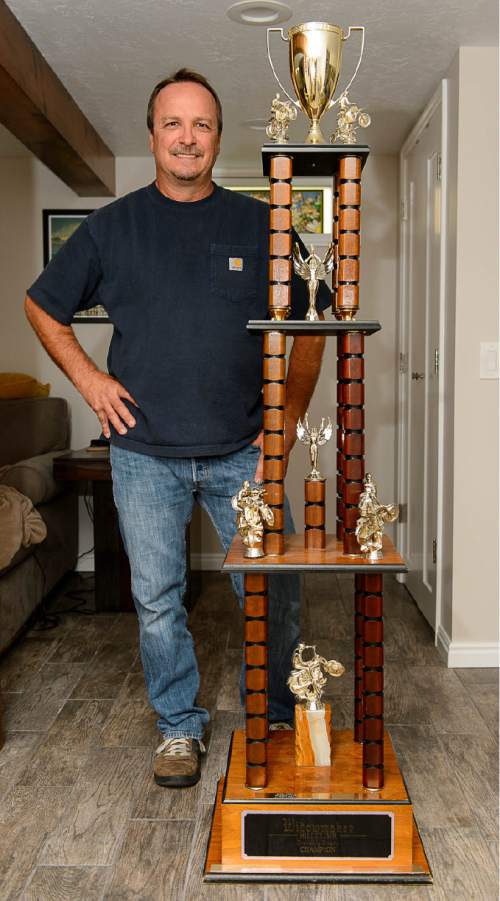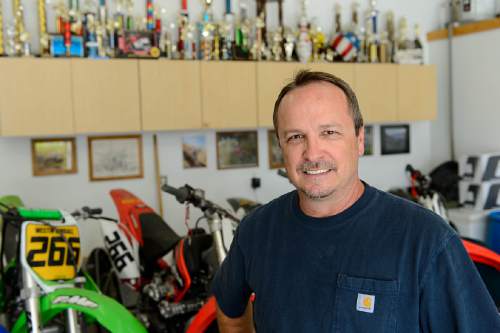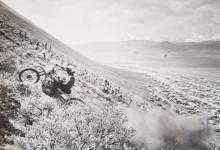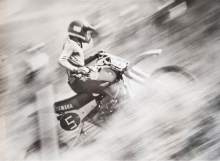This is an archived article that was published on sltrib.com in 2016, and information in the article may be outdated. It is provided only for personal research purposes and may not be reprinted.
Editor's note • In this regular series, The Tribune explores the once-favorite places of Utahns, from restaurants to recreation to retail. If you have a spot you'd like us to explore, email whateverhappenedto@sltrib.com with your ideas.
On the southern edge of Draper, two-story homes populate a wedge of land once occupied only by dirt and sagebrush. A scarred 1,000-foot hillside is the single remaining clue that the area hosted an internationally recognized spectacle for 25 years.
From 1963 to 1988, "The Widowmaker" attracted thousands of revved-up motorcyclists looking for the rides of their lives in the sport of hill climbing, speeding to the top of steep hills as fast as possible.
Hill climbers hailing from across the globe returned each year — along with visitors and national television coverage — to see if they could conquer one of the toughest tracks in the world. Only a handful of people claimed victory before The Widowmaker's end.
Fourteen years later, fans of the hill climb proved their devotion by opening their own version of The Widowmaker, in Croydon. But like its predecessor, the event eventually shuttered amid land disputes.
Veteran motorcyclists are still hoping that someday, somewhere, they will have a chance to ride it again.
—
Kings of the hill • Perhaps Mel Kimball Jr. was destined to rise to hill-climbing fame.
His father was one of the only people to conquer The Widowmaker in its early years, in the 1960s.
As a child living in Bountiful, Kimball Jr. watched his father compete in hill climbs around the country, and knew The Widowmaker as the hardest hill climb event of the year. He also knew that when he was old enough, he'd try conquering it himself.
"It's something you watch other riders attempt and you know that that's what you're after — to get over the top."
He amassed the techniques and equipment to start hill climbing at age 11, and seriously competing around the country as a young adult. In the 1970s, as hill climbing accumulated international recognition through the 1970s, so did Kimball Jr., who was featured in motorcycle magazines and television programs like the ABC Wide World of Sports.
The spotlight also fell on Draper's mountainside. The Widowmaker was the first major climb of every season. Its sheer incline and the tall sagebrush rubbing up against the riders made the hill one of the hardest in the world. There were national hill-climbing champions who never reached the summit.
But Kimball Jr. did, finally. In 1986, he accelerated and maneuvered his way up The Widowmaker just right, clearing the top as a crowd of 12,000 onlookers cheered.
"It was probably the most exciting moment of my life," Kimball Jr. said.
His younger brother would claim fame by riding to the top the following year, seizing the traveling trophy for himself.
When Kimball Jr. won it back in 1988, he didn't know he'd be keeping the trophy for good.
—
The downfall • By the late '80s, the Draper City Council and Draper police had had enough of the rambunctious hill-climbing crowds.
At the 1987 Widowmaker, about 30 people were arrested for driving under the influence of alcohol and another 100 people for other alcohol-related offenses, according to a Deseret News article.
Those who watched the event still remember the mass of people partying as the riders took their marks.
"It was crazy. The first word that comes to mind is just a wall of people," said Kim Nelson, who watched the 1987 climb and became a regular at the renewed Widowmaker in Croydon 15 years later. "It was almost like the biggest concert you can ever imagine in the outdoors. It was just people laughing and carrying on and when somebody wrecks you would hear the 'ohh' and 'ahh.' "
Mayor Charles Hoffman had also become concerned about environmental damage on the hillside, scarred through years of biking. Worried about erosion, Hoffman demanded that the Bees Motorcycle Club — which sponsored the event each year — replant grass on the hillside after the 1988 run. He was unsatisfied with their effort.
Add to that the logistical nightmare of routing tens of thousands of riders and spectators to and from the hill through the largely undeveloped Draper. Each event required negotiations with property owners over spectators crossing private land to reach — and use — the hill. Concerns about rowdy guests made residents more and more reluctant, until they eventually withdrew their permission.
"We've had numerous problems with drugs, alcohol consumption [and] assaults," Draper Councilman Todd Andersen told the Desert News in 1989. "It was not something that was a lucrative or profitable venture for Draper City."
—
A new Widowmaker • Jordy Smith was struck by memories of The Widowmaker more than a decade later when he passed by a hill in Croydon, about an hour from Draper in mountainous Morgan County.
He stopped to snap photos, and sent them to his colleagues with a simple phrase that would launch another decade of Utah hill climbing: "This might be the new Widowmaker."
Smith — who had started climbing the original Widowmaker in 1968, and later became the National Hill Climb Champion in the Over-40 Class — gathered his family members and volunteers and got to work.
The revival of The Widowmaker in 2003 was welcomed by old crowds and new. Those who never made it over the daunting Draper hill would have another shot — and those who were too young to compete on the original would have their turn.
"I remember watching the old Widowmaker on TV," said Kevin Bromenshenk. "I watched them climb the old hill that was in Draper, and it was really cool get to compete in it even though it was on a different hill."
Bromenshenk would conquer hills around the country, but he never summited The Widowmaker. Of the 4,800 attempts to climb the revived Widowmaker through its 11 years in Croydon, only 35 were successful. Mel Kimball Jr. accounted for two of those.
The Croydon event's organizers learned from the struggles of their Draper predecessors. No alcohol was allowed, except within private RVs. The change kept spectators calmer and smaller in number, though the event still attracted between 5,000 and 12,000 people.
But the hill's owner worries that anyone injured on his property would try to sue him brought The Widowmaker event to a halt again.
The 2013 announcement brought the same disappointment and outrage so many had felt 25 years earlier.
"I've got a whole three-ring binder of people who wrote sympathy cards begging me, 'please don't let this thing stop – it is our most favorite thing to do,'" Smith said. "I put it all together and gave it to the landowner and said, 'Will you please reconsider?' "
The answer, he said, was a respectful "no."
—
The legend lives on • Those who have ridden The Widowmaker — original or reboot — haven't forgotten its impact.
"The sport will keep going, but the legend of that hill is why people come out to see it," Bromenshenk said.
Kimball Jr. has retired from hill climbing. His championship trophy and the motorcycle he rode atop both Widowmaker hills are in his basement — he can't bring himself to sell them.
Local sandwich shop Even Stevens pays homage to The Widowmaker in its Draper location with a mural and motorcycle memorabilia.
"We get people coming in all the time just for the tribute," said Robert Andersen, general manager of the Draper shop. "We have old gloves and motorcycle helmets. They come in and sit next to our stuff all the time. They'll say to me, 'Do you know whose that is? It's mine!' "
Smith is holding on to thousands of dollars worth of hill-climbing equipment — a fence and powerful hoses among them — and the hope he can use them again someday.
"If you went to the Good Lord and wanted a perfect spot for a hill climb, you couldn't describe a better place than The Widowmaker in Croydon," Smith said. "I keep thinking one day we could bring it back."


